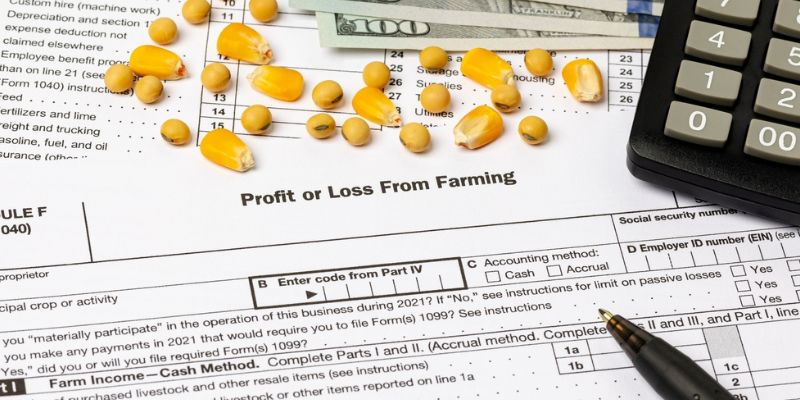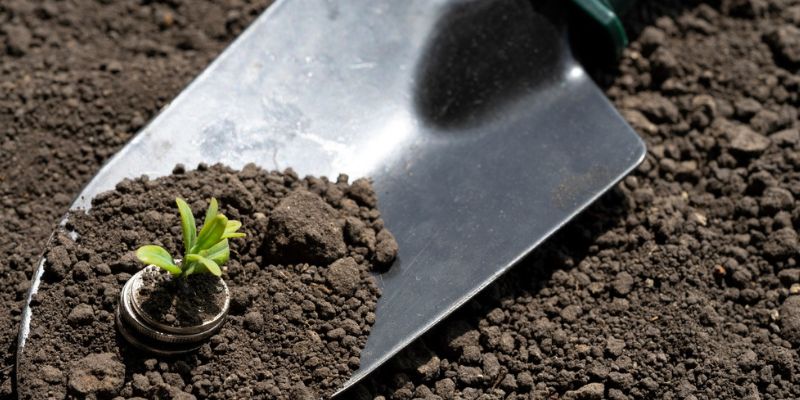Financing in the farming industry is critical to help businesses expand or acquire new land. Understanding how to get approved for a farm loan in 2025 can distinguish between a successful expansion and a missed opportunity. Many lenders have specific requirements and a detailed loan process that applicants must understand and follow to get approved. By preparing and working with the right partners, you can significantly improve your chances of approval.
Farm loans today come in various forms, from government-backed programs to private ag lenders. Still, all share a standard expectation: that borrowers demonstrate financial stability and a clear plan for using and repaying the loan. This guide will explain the key steps and criteria for getting your farm loan approved and offer tips.
If you have questions or need personalized guidance, contact Janus AG Finance. Our farm finance experts are ready to help you confidently move forward.

Key Farm Loan Requirements for Approval
Every lender has specific farm loan requirements that you must meet to get approved. While specifics vary, most farm loan underwriters look closely at the following criteria:
Credit Score and History
Many farm lenders prefer a FICO score of 680 or higher, indicating a history of reliable repayment. A higher score can even help you secure better interest rates.
FYI: Avoid late payments and keep credit card balances low (under 50% of your credit limit) to maintain a strong score.
Debt-to-Asset Ratio
Lenders will evaluate how much debt you carry relative to your assets. Aim to keep your farm’s debt-to-asset ratio around 50% or less. In practice, that means not borrowing more than half of what your farm property and other assets are worth.
Having significant equity in your land or operation improves your chances of approval. Many lenders will also cap the loan-to-value (LTV) on farm real estate at around 70% of the land’s value, so be prepared to provide a substantial down payment or additional collateral if needed.
Cash Flow and Debt Service Coverage
One of the most critical factors is demonstrating that your farm (and you as a borrower) have enough income to pay back the loan comfortably. Generally, lenders want to see that your operation generates at least 150% of the annual loan payments in net income (a 1.5:1 debt service coverage ratio).
They look at net operating income rather than gross revenue. In other words, it’s not how much you make in sales, but how much profit is left after expenses, that pays the bills.
Collateral
Most farm loans are secured by collateral; usually the land or equipment you’re financing (and sometimes additional assets). Lenders will require an appraisal to confirm the value of the property. Ensure you have a clear title to your assets and understand that a lender typically won’t lend much beyond 70% of the collateral’s value.
If you’re buying a new farm property, a larger down payment (30% or more) may be necessary to meet equity requirements.
Farming Experience and Management
Some loan programs (especially for larger loans or specific federal programs) consider your farming experience and management ability. A proven track record in agriculture management will give lenders more confidence in your ability to succeed.
Meeting these requirements is crucial to get approved. If you fall short in any area, for instance, if your credit score is low or your debt levels are high, take time to improve those factors before applying. Pay down debts to improve your equity position, increase your farm’s profitability if possible, and correct any errors on your credit report. Patience and preparation can turn a “no” into a future “yes.”
As Janus AG Finance advises, it can take years of discipline to reach the ideal borrower profile, but the effort is worth it to become “the kind of borrower that bankers love.”

Step 1: Assess Your Financial Readiness
Before you even fill out an application, take a hard look at your finances. Calculate your debt-to-asset ratio, check your credit score, and determine your debt service coverage. If you’re not within acceptable ranges (refer to the requirements above), address these issues first.
For example, you might delay a land purchase to build more equity or pay down debt if your financial ratios are too weak. Also, review your credit report for any inaccuracies and fix them, and continue paying all bills on time to avoid any dings to your credit.
Lenders will appreciate a borrower who proactively improves their financial health before applying.

Step 2: Develop a Solid Farm Business Plan
A well-crafted business plan is your roadmap for success and a crucial part of a loan application. Lenders (and the FSA) rely heavily on your business plan to evaluate your readiness, vision, and your farm’s viability. Your plan should clearly describe your farming operation, what you produce, how you intend to sell it, and how you intend to grow or maintain profitability.
It must also include robust financial projections (expected income and expenses for the next several years) showing you can generate enough earnings to repay the loan.
Outline the qualifications and experience of your management team (even if that’s just you; highlight your farming background or relevant skills). The goal is to convince the lender that you have a thoughtful strategy and understand the economics of your farm. A strong business plan not only improves your chances of approval but may also help during underwriting discussions by demonstrating that you’ve done your homework.

Step 3: Gather and Organize Documentation
Ensuring your paperwork is complete can speed up the approval process. Before you apply, compile all the necessary documents, such as:
- Financial Records: Three years of personal and farm tax returns, recent profit/loss statements, balance sheets, and cash flow statements.
- Land and Asset Documents: Deeds or titles for any property you use as collateral, equipment lists, and any recent appraisal reports, if available. If you’re purchasing property, include the signed purchase agreement or contract.
- Personal Information: Copies of your identification, a resume or summary of your farming experience, and any relevant certifications or licenses.
- Other Supporting Documents: Insurance policies (farm, crop, or liability insurance), existing loan statements, leases or contracts (for land leases, equipment rentals, or crop share agreements), and any legal entity’s organizational documents if your farm is a corporation/LLC.

Step 4: Submit Your Application and Follow Through
With your documents and plan, it’s time to apply for the loan. Identify a lender that fits your needs (you may contact multiple lenders, including specialized farm lenders like Janus AG Finance, to compare offers) and submit your application with all supporting documentation. Double-check that every section of the application is complete and accurate.
Once submitted, be ready to answer follow-up questions or provide any extra information the lender requests. Staying responsive and maintaining open communication with your loan officer helps keep your application on track. Underwriting might take several weeks, so patience is key until you receive a final decision.
Need help navigating the process? Contact Janus AG Finance for expert guidance at any stage on how to get a farm loan.

Final Tips to Improve Your Approval Chances
Getting approved for a farm loan isn’t always easy, but following these additional tips can tilt the odds in your favor:
1. Build Your Credit and Savings Early
If you seek a loan in the next year or two, start preparing now. Pay down existing debt, avoid new unnecessary loans, and save up for a larger down payment. A stronger financial position will make you a more attractive borrower.
2. Don’t Overextend Your Operation
It might be tempting to borrow the maximum amount to buy the biggest farm you can, but taking on too much debt is a common pitfall. Janus AG Finance warns against “trying to grow too big too fast”. It’s often wiser to start smaller, prove you can manage the debt, and then scale up gradually. Sustainable growth and a stable loan repayment history will make future approvals easier and help your farm thrive long-term.
Beware of “Too Good to Be True” Offers
Be cautious if you encounter a lender promising straightforward approval, no down payment, or unusually low rates without asking for much information. Unfortunately, predatory lenders operate in the agricultural sector, preying on farmers desperate for financing.
They might charge hefty upfront fees and never actually fund the loan, or offer loans with hidden conditions that put your land at risk. Stick with reputable institutions and always read the fine print on loan terms.
Start Your Farm Loan Journey with Confidence
Learning how to get approved for a farm loan in 2025 requires preparation, patience, and the right partners. By meeting key requirements and approaching the farm loan process methodically, you can significantly improve your chances of approval. Remember that every farmer’s situation is unique; what matters is showing the lender that you are a low-risk, high-potential borrower with a solid plan for success.
If you’re ready to take the next step or even want to explore your options, contact Janus AG Finance today. With over 30 years of agricultural lending experience, our team of experts will answer your questions, help you navigate the application process, and work with you to secure a farm loan that fuels your agricultural ambitions.

